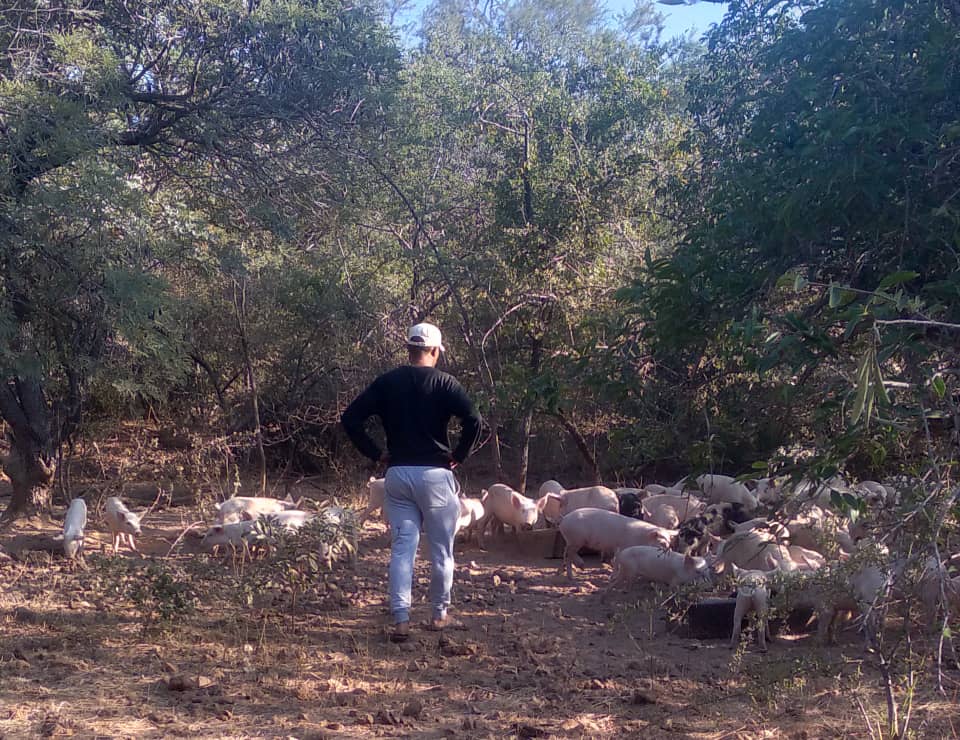FARMERS in southern Namibia are battling to contain the effect of ‘green drought’. ‘Green drought’, literally translated from Afrikaans as ‘groen droogte’, refers to areas that have received good rainfall, but have limited livestock due to a previous devastating stint of drought. Benedick Louw, a self-made agriculturist and farmer in that part of the country, is one of those who have had to deal with ‘green drought’.
Having primarily farmed with small stock since his school days, Louw had to watch helplessly as many of his livestock were being wiped away by a drought spell that spanned the better part of the last three years. The remaining few were sold at giveaway prices to avoid death.
Narrating his farming journey, Louw said farming has always been part of his genes. “As is the case for most Africans – black people in particular – I started expanding on this inherent interest of farming when I was still very young, especially during my primary school years at KrЪnlein primary in Keetmanshoop when I would go together with my siblings and other cousins to our communal farm, called !Nubus, during weekends and school holidays,” he said.
!Nubus is a village within the Blouwes Traditional Authority. The main settlement in the area, Blouwes, has a population of about 550 people, and it is located approximately 48 km northeast of Keetmanshoop along the D3911 district road. Louw said despite the challenges the sector presents, he will never quit farming. “Green drought is a familiar term nowadays with farmers who have received good rainfall with good rangeland conditions, but who do not have any livestock to farm with as a result of the drought, which forced many to sell their few goats for peanuts, instead of forfeiting them to drought,” he said.
Louw said the encouragement of growing up in a farming family pushed him into starting his small stock herd in 1997 when he was still in high school. “My mother gifted me two ewes to farm with, which was the norm then for elders to give something to those who would regularly go to the farm during school holidays, and who worked the ground in terms of livestock. This was done to act as a springboard for young ones, and to motivate them to become serious communal farmers one day,” he said. At the time, farming on a commercial scale was a far-fetched dream for the young man from !Nubus, as such privilege was reserved for a few people, who could easily get land and other means of production.
Even if their livestock were to quadruple, Louw and others knew it would not be possible to get commercially viable land on which to expand farming activities due to the high cost of land and the difficulties in securing one through loans. Sadly, this situation has not changed much since then, Louw said, as it is still difficult to get a piece of fertile agricultural land to call your own.
“It was difficult to get land back then, owing to ‘institutionalised racism’, which essentially made it very difficult for black emerging farmers to move up the ladder. This has not changed much today, as applying for a loan at banks like Agribank is not only cumbersome but anti-youth and anti-communal farmers. “I applied for a loan under the ERFP as well as professional schemes at Agribank but to no avail. Agribank is always good at promoting these products but useless in providing such opportunities,” he said.
After getting retrenched in 2017 at the Skorpion Zinc mine with 700 fellow mineworkers, Louw enrolled for a BSc in Agriculture at NUST in 2019. He is currently a Research Intern at the Agricultural Trade Policy Institute (ATPI) of NUST, where he is involved in projects targeting the youth, women and vulnerable groups of society.
“We are currently doing a project commissioned by FAO in conjunction with the MAWLR: An in-depth value chain report on the status of selected commodities in light of the Covid-19 crisis. He is also on job attachment at the Kanyikama Farm in the Kavango West Region of Namibia, a commercial farm whose farming activities include cattle (pen fattening), crop production (maize), horticulture (avocados), pig farming, fish farming and other plant production activities such as sweat bean production.
At Kanikama, Nguni Cattle are bred with the Simbra hybrids, which are fattened in pens with feed. Water troughs are filled by channelling water straight from the Kavango River.
“We never imagined ourselves out of the communal mentality – which, unfortunately, because of lack of access to capital and the grossly skewed land distribution regime – continues to stunt many communal farmers like myself and others in terms of productivity and the need to diversify into crop production, poultry, pig farming and fish farming – all of which can drastically improve the livelihoods of Namibia’s communal farmers,” he said.
- tjatindi@gmail.com


